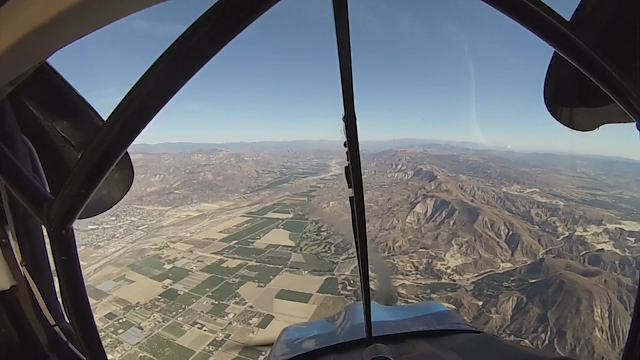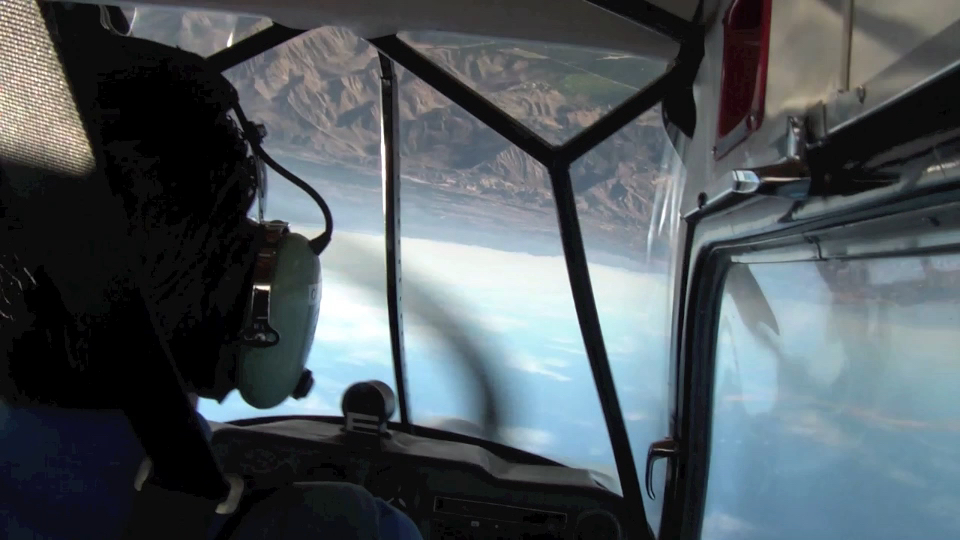Aileron Rolls
This page may be very controversial to aerobatic pilots, many of whom have a tendency to see red and engage in very passionate "discussions" at the description of an aileron roll. An "aileron roll" does not strictly have a single precise definition, but it can be given a broad one:
An aileron roll is a maneuver in which the airplane rotates 360° primarily about its longitudinal axis. To be considered an aileron roll, the principal rolling force must originate from the ailerons.(My Definition)
Many different pilots have
different techniques for rolls that they call "aileron rolls," but
below we shall explore three specific types of aileron rolls that
display interesting physical properties.
Ballistic Roll
This type of roll is not exceptionally common, but it is easiest to explain using physics concepts. In the ballistic roll, the pilot first pitches up the airplane (pulls up the nose) to about 20-30° above the horizon:

The pitched-up nose, about 25° above the horizon
(Photo by me)
Then, he unloads the wings to the point where they are producing zero lift. This means that the airplane and everything inside of it will experience an acceleration of zero g throughout the entire roll. The airplane, for all intents and purposes, is simply a free-falling body accelerating toward the earth at 9.8m/s. This also means that the nose will fall as the roll goes on, since the center of mass of any airplane that non-suicidal pilots fly is toward the nose:

(Photo by me)
Once the roll is complete, the airplane is pulled back to level
flight.
Positive-G Roll
Nearly all pilots go through a process called "trimming" their airplane in flight. This means that they adjust a small tab on the elevator control so that when they let go of the stick, the airplane stays on a level flight path instead of dropping down and free falling. The positive G roll follows a similar flight process to the ballistic roll, but with one key difference: the wings are unloaded to 1g instead of zero g.
The g forces involved in this roll can vary from 2g during the final portion to almost zero g at the inverted portion, though there are no "correct" ones as long as they are always above zero.

(Photo by me)
A closely related maneuver is the barrel roll, which is a positive g roll where the pilot pulls back on the stick during the non-inverted portions of the roll. The g-forces are always positive in this roll as well, but the changing forces cause the airplane to fly a pattern like that of a ball rolling on the inside of a barrel, like so:

(Photo: Aircraft Recognition,
http://www.aircraftrecognition.co.uk/barrel_roll.html)
The Positive-G Roll And Gravity

(Photo Credit: Bob Hoover)
But why does this happen? Unlike the ballistic roll, where the "roll" was essentially the same as spinning a mass before dropping it off a high cliff, the rolling motion in the positive-G roll is more complicated. Recall this type of diagram from the page on turns:

(Photo: The Pilot's Handbook Of Aeronautical Knowledge)
In the positive G roll, the airplane is rotating on a circular pattern about a point in the air, just as a bucket of water would if you were to swing it above your head in a circle. The centripetal force in this case comes from the lift generated by the wings, and it increases as the pilot pulls back on the stick and demands more lift from the wings.
With this in mind, it is trivial to see why gravity does not change direction: as long as the centripetal acceleration during the roll is higher than that of gravity, the airplane will accelerate "into" the occupants and any objects inside of it, as they would have preferred to stay stationary because of their inertia.